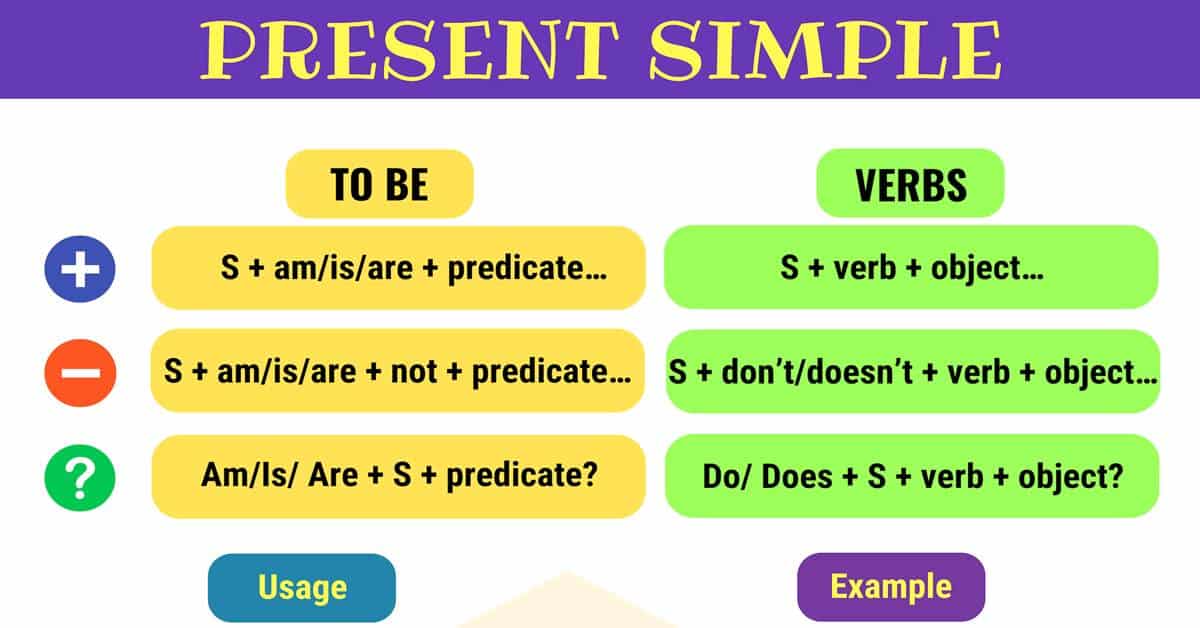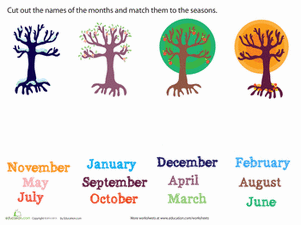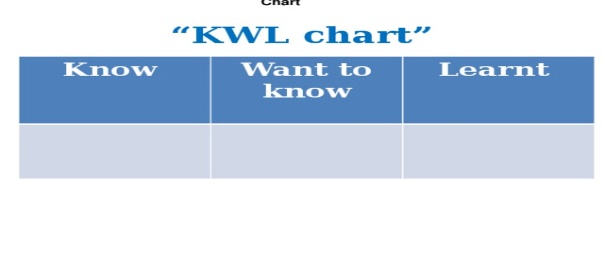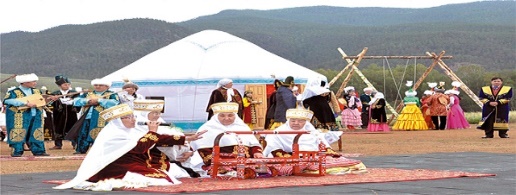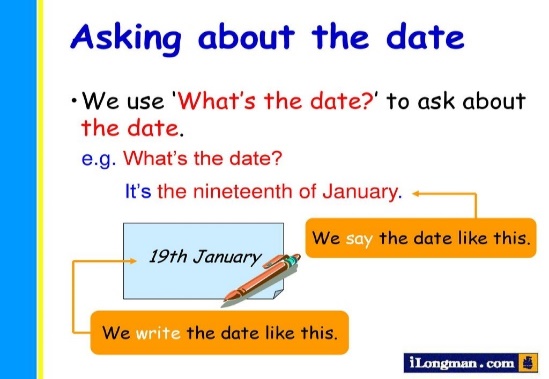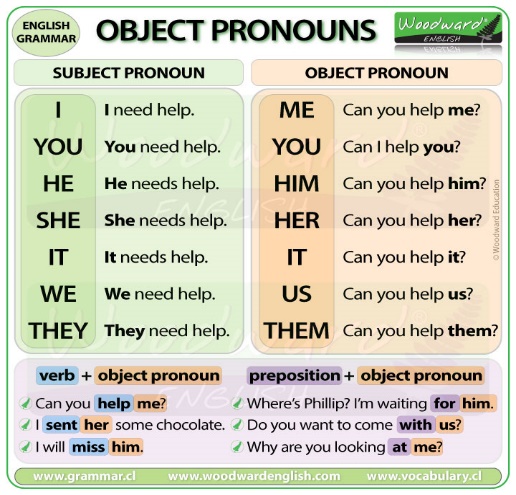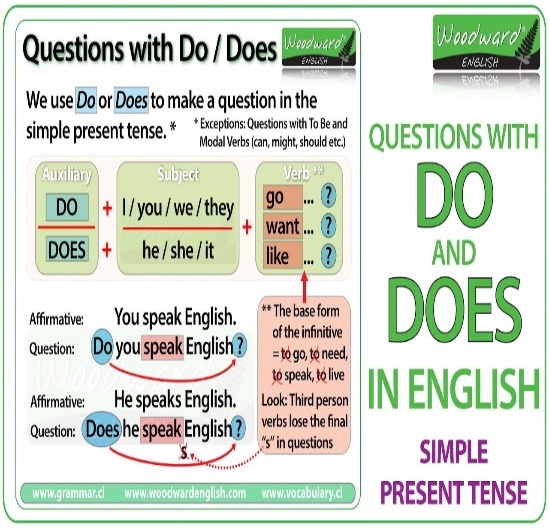
Бонусты жинап картаңызға (kaspi Gold, Halyk bank) шығарып аласыз
5-сынып English plus кітабы бойынша 2-тоқсан ҚМЖ
Дипломдар мен сертификаттарды алып үлгеріңіз!

Short term plan
|
Unit of a long term plan: Values |
Lesson 25 |
||
|
Teacher name: |
|
||
|
Date: |
|
||
|
Grade: 5 |
Number present: |
absent: |
|
|
Lesson title |
Celebrations and special days |
||
|
Learning objectives |
5.2.1.1understand a sequence of supported classroom instructions 5.3.4.1 respond with limited flexibility at sentence level to unexpected comments on an increasing range of general and curricular topics 5.5.4.1 write with support a sequence of extended sentences in a paragraph to give basic personal information |
||
|
Lesson objectives |
Learners will be able to: • Learn and practise verbs to talk about celebrations. • Practise talking about celebrations and special days. |
||
|
Value links |
Family – Family values are moral and ethical principles of typical family life, including sacrificing for loved ones, putting your loved ones first, and keeping your loved ones at the centre of your thoughts and actions. |
||
|
Plan |
|||
|
Stages / Time |
Teachers’ actions |
Students’ actions |
Assessment criteria |
Resources |
|
Beginning of the lesson Warming-up 3 min Pre-learning «Brainstormin» method 7 min. |
Organization moment 1.Greeting. Ask about the weather. Warming up Where are you from? How old are you? What color is it? How many students are there in class? What day of the week today? Lead – In
Hello. What’s your name? I’m Jack. And you? My name’s Edita. When is your birthday? The 1st of January. And you? In March |
The aim: To develop Ss speaking skills and create friendly atmosphere Efficiency: By telling the wishes they show their appreciations . Students say about ages |
At the organization moment T tries to award active Ss. «The praise» method is used to evaluate Ss with phrases like: “Good job! Well done!” F
Good job! |
Pictures Student’s book |
|
Middle of the lesson Presentation part. 30 min |
While-listening Ex: 1 P: 54 Focus students’ attention on the quiz on page 55. Allow students a couple of minutes to look at the different celebrations and ask them to decide which one they think looks like most fun. Get some feedback from one or two students. Differentiation: «Verbal support» method is used to help Students use new words in the text. Ex: 2 P:54 • Divide students into pairs and ask them to do the quiz on page 43. Encourage them to guess the answers if they do not know. • When students have finished, check answers and get feedback by asking for a show of hands for answer a or answer b in each case Differentiation: «Verbal support» method is used to help Students use new words in the text. Ex:3 P: 54 • Explain the task and go through the example together to make sure students know what they have to do, pointing out that only one of the nouns in each case makes sense with the verb. • In a stronger class, ask students to do the activity individually before checking their answers in pairs. In a weaker class, check their understanding of the vocabulary and ask them to do the task in pairs |
Students complete Celebrations Quiz with words ANSWERS: 1 dance 2 wear 3 sing 4 decorate 5 cook 6 celebrate Students work in pairs. Do the Celebrations Quiz. ANSWERS: 1 a 2 a 3 a 4 a 5 b 6 a 7 a 8 b 9 b Students choose the correct combinations of the verbs and nouns. ANSWERS: 1 Christmas 2 pizzas 3 shoes 4 decorate 5 dance 6 get |
Assessment criteria - Identify and practise verbs to talk about celebrations.
pupils are evaluated by collecting fish Descriptor: -Talk about special days Peer assessment: answer key Assessment criteria: Practise talking about celebrations and special days. Descriptor: Choose the correct verbs and nouns -Make CCQ questions |
Cards Worksheets |
|
End of the lesson 5 min |
Home task: Ex: 1 P: 34 WB |
|
Students use their stickers to show their knowledge according to the lesson. |
Poster KWL chart |
Short term plan
|
Unit of a long term plan: Values |
Lesson 26 |
||
|
Teacher name: |
|
||
|
Date: |
|
||
|
Grade: 5 |
Number present: |
absent: |
|
|
Lesson title |
International Festivals |
||
|
Learning objectives |
5.5.1.1 plan, write, edit and proofread work at text level with support on a limited range of general and curricular topics 5.2.2.1 understand an increasing range of unsupported basic questions which ask for personal information 5.4.3.1 understand the detail of an argument on a limited range of familiar general and curricular topics |
||
|
Lesson objectives |
Learners will be able to:
|
||
|
Value links |
Loyalty – Loyalty might be a core personal value to you if you highly prize friends that are reliable and trustworthy. You might put your friends or chosen family first, always being there for them when they need you. |
||
|
Plan |
|||
|
Stages / Time |
Teachers’ actions |
Students’ actions |
Assessment criteria |
Resources |
|
Beginning of the lesson Warming-up 3 min Pre-learning «Brainstorming» method 7 min |
Organization moment 1.Greeting. Ask about the weather. Warming up Where are you from? How old are you? What color is it? How many students are there in class? What day of the week today? Lead – In
I hope this Christmas season will take you closer to all those that you desire in your heart. Wishing you and your family good health, never-ending happiness, peace, and prosperity this Christmas and in the coming years. Merry Christmas and Happy New Year! |
The aim: To develop Ss speaking skills and create friendly atmosphere Efficiency: By telling the wishes they show their appreciations . Students say about celebrations |
At the organization moment T tries to award active Ss. «The praise» method is used to evaluate Ss with phrases like: “Good job! Well done!” Formative Assessment
Good job! |
Pictures Student’s book |
|
Middle of the lesson Presentation part. 30 min |
While-listening Ex: 1 P: 56 • Focus on the three people on page 44. Ask the students which of these people they would like to meet and get some feedback, e.g. I would like to meet Clara. She looks friendly. • Explain the task. Focus students on the text and play the recording. Tell them to ignore any unknown words for now Differentiation: «Verbal support» method is used to help Students use new words in the text. Ex: 2 P:56 Draw students’ attention to the statements. In a stronger class, ask the students to complete the activity individually before checking their answers in pairs. Encourage them to guess the meaning of any new vocabulary from the context Differentiation: «Verbal support» method is used to help Students use new words in the text.
Ex:3 P: 56 • Refer students to the pictures of food in A–E. Ask the class if they can identify any of them before they do the activity. • Explain the task. In a weaker class, ask students to find the words in the texts to help them work out the meanings from context |
Students read and complete the text with the verbs ANSWERS: 1 go 2 celebrate 3 make 4 jump 5 decorate Students read the text again and write true or false ANSWERS: 1 True 2 False: He eats grapes at twelve o’clock on New Year’s Eve. 3 True 4 False: Heidi and her friends jump over the fire. 5 False: She sings songs during the days before Christmas. 6 False: Her father cooks the meal at Christmas. Students match words with pictures ANSWERS: 1 E 2 D 3 A 4 B 5 C |
Assessment criteria - Understand texts about festivals in different countries. Descriptor: - read and complete the text with the verbs
Peer assessment: answer key Descriptor: read the text again and write true or false
pupils are evaluated by collecting pencils -Make CCQ questions |
Cards Worksheets |
|
End of the lesson 5 min |
Home task: Ex: 3 P: 34 WB |
|
Students use their stickers to show their knowledge according to the lesson. |
Poster KWL chart |
Short term plan
|
Unit of a long term plan: Values |
Lesson 27 |
||
|
Teacher name: |
|
||
|
Date: |
|
||
|
Grade: 5 |
Number present: |
absent: |
|
|
Lesson title |
Language Focus: Present Simple |
||
|
Learning objectives |
5.3.4.1 respond with limited flexibility at sentence level to unexpected comments on an increasing range of general and curricular topics 5.4.1.1 understand the main points in a limited range of short simple texts on general and curricular topics 5.6.7.1 use simple present to express the activities on special days |
||
|
Lesson objectives |
Learners will be able to:
|
||
|
Value links |
Fairness – If you value fairness, you might be highly sensitive to situations at school or in the workplace where a teacher or a peer has exhibited favoritism or allowed someone to get away with living by a different set of rules to everyone else. |
||
|
Plan |
|||
|
Stages / Time |
Teachers’ actions |
Students’ actions |
Assessment criteria |
Resources |
|
Beginning of the lesson Warming-up 3 min Pre-learning «Brainstorming» method 7 min. |
Organization moment 1.Greeting. Ask about the weather. Warming up Where are you from? How old are you? What color is it? How many students are there in class? What day of the week today? Lead – In
I go to school every day. She goes to school every day. I don’t go to school every day. She doesn’t go to school every day. Do you go to school every day? Does she go to school every day? |
The aim: To develop Ss speaking skills and create friendly atmosphere Efficiency: By telling the wishes they show their appreciations . Students say about daily routines |
At the organization moment T tries to award active Ss. «The praise» method is used to evaluate Ss with phrases like: “Good job! Well done!” Formative Assessment
Good job! |
Pictures Student’s book |
|
Middle of the lesson Presentation part. 30 min |
Ex: 1 P: 57 • Draw students’ attention to the examples and to the verbs. Allow them a couple of minutes to read through them. • Tell students to identify which of the sentences have a subject in the third person singular. Elicit that Fernando, My dad, Heidi and Clara are all in the third person singular. Differentiation: «Verbal support» method is used to help Students use new words in the text. Ex: 2 P:57 Allow students some time to read the sentences. Ask them to underline the subject in each case to help them focus on whether they need to add -s or not. Differentiation: «Verbal support» method is used to help Students use new words in the text. Ex:3 P: 57 • Explain that students need to follow the lines from the different people to find out what their activities are in order to make the sentences. Do the first one together as an example. • Students do the activity in pairs. Monitor, helping where necessary and reminding students to add -s to the verb when using the third person singular. Check answers as a class. |
Students look at the verbs in examples. ANSWERS: The verbs for he, she and it are different in the present simple because they end in -s. Students choose the correct words. ANSWERS: 1 make 2 eats 3 wear 4 plays 5 dance Students look at the puzzle and make sentences about the people. ANSWERS: 1 Curtis sings in a band. 2 Dee and Susan make cakes. 3 Patrick eats hot dogs. 4 Dee and Patrick play an instrument. 5 Altynay and Boris dance salsa |
Assessment criteria - Learn and practise using the present simple in the affirmative. Descriptor: -use the present simple
Descriptor: -look at the puzzle and make sentences about the people.
pupils are evaluated by collecting pencils -Make CCQ questions |
Cards Worksheets |
|
End of the lesson 5 min |
Home task: Ex: 2 P: 35 WB |
|
Students use their stickers to show their knowledge according to the lesson. |
Poster KWL chart |
Short term plan
|
Unit of a long term plan: Values |
Lesson 28 |
||
|
Teacher name: |
|
||
|
Date: |
|
||
|
Grade: 5 |
Number present: |
absent: |
|
|
Lesson title |
The months and seasons. |
||
|
Learning objectives |
5.2.1.1understand a sequence of supported classroom instructions 5.3.4.1 respond with limited flexibility at sentence level to unexpected comments on an increasing range of general and curricular topics 5.4.1.1 understand the main points in a limited range of short simple texts on general and curricular topics |
||
|
Lesson objectives |
Learners will be able to: • Learn and practise the months and the seasons. • Understand an interview about holidays. • Practise talking about holidays in different times of the year. |
||
|
Value links |
Honesty – You may highly value telling people the truth. This one gets tricky when being honest can be hurtful to others. So, a person who really puts honesty first might be the sort of person who will tell the truth even if it hurts to do so. |
||
|
Plan |
|||
|
Stages / Time |
Teachers’ actions |
Students’ actions |
Assessment criteria |
Resources |
|
Beginning of the lesson Warming-up 3 min Pre-learning «Brainstorming» method 7 min. |
Organization moment 1.Greeting. Ask about the weather. Warming up Where are you from? How old are you? What color is it? How many students are there in class? What day of the week today? Lead – In
In a year we have four sesons. Each season has three month. |
The aim: To develop Ss speaking skills and create friendly atmosphere Efficiency: By telling the wishes they show their appreciations . Students say about seasons |
At the organization moment T tries to award active Ss. «The praise» method is used to evaluate Ss with phrases like: “Good job! Well done!” Formative Assessment
Good job! |
Pictures Student’s book |
|
Middle of the lesson Presentation part. 30 min |
While-listening Ex: 1 P: 58 • Write the following words on the board: lambs, snow, leaves, sunshine. Draw students’ attention to the photos of the seasons at the bottom of the page. Ask them to match each of the words with one of the photos. Explain the task. Differentiation: «Verbal support» method is used to help Students use new words in the text. Ex: 2 P:58 • Ask the class what the incomplete words are and elicit that they are the months of the year. Tell stronger students to try to complete them before listening to the recording. • Write the correct spelling of the months on the board for students. Drill the class on pronunciation of the months. Differentiation: «Verbal support» method is used to help Students use new words in the text.
Ex:3 P: 58 • Draw students’ attention to the questions in the quiz. In a stronger class, ask students to go ahead and answer the questions. In a weaker class, read the questions together with the students and check for understanding. Ex:4 P: 58 Students compare their answers in pairs. Play the recording straight through for students to check their answers. Check answers as a class. |
Students match the words with the photos in the Month Quiz. ANSWERS: autumn (leaves), winter (snow), spring (lambs), summer (sunshine), Students copy and complete the names of the months. ANSWERS: 2 February 3 March 4 April 5 May 6 June 7 July 8 August 9 September 10 October 11 November 12 December Students do the months quiz. ANSWERS: 1 August 5 Students’ own answers 2 21st June 6 Students’ own answers 3 1st January 7 Students’ own answers 4 September (2017) 8 Students’ own answers Students listen to an interview with Lady Tara Toffingham ANSWERS: 1 Switzerland 3 London 2 Rio de Janeiro 4 New York and Boston |
Assessment criteria - Learn and practise the months and the seasons. Descriptor: - match the words with the photos in the Month Quiz.
pupils are evaluated by collecting fish Descriptor: -copy and complete the names of the months.
-Make CCQ questions |
Cards Worksheets CD 2.04 CD 2.05 |
|
End of the lesson 5 min |
Home task: Ex: 1 P: 36 WB |
|
Students use their stickers to show their knowledge according to the lesson. |
Poster KWL chart |
Short term plan
|
Unit of a long term plan: Values |
Lesson 29 |
||
|
Teacher name |
|
||
|
Date: |
|
||
|
Grade: 5 |
Number present: |
absent: |
|
|
Lesson title |
Present Simple (negative) |
||
|
Learning objectives |
5.4.1.1 understand the main points in a limited range of short simple texts on general and curricular topics 5.5.3.1 write with support factual descriptions at text level which describe people, places and objects 5.6.3.1 use Present Simple (negative) to speak about activities |
||
|
Lesson objectives |
Learners will be able to: • Learn how to form and use the negative form of the present simple. • Practise talking about activities at different times of the year. |
||
|
Value links |
Generosity – This may be a core value of yours if you cherish people who will give their time and resources to people in need. You may consider yourself to be a generous person if you find joy and meaning in giving to others. |
||
|
, Plan |
|||
|
Stages / Time |
Teachers’ actions |
Students’ actions |
Assessment criteria |
Resources |
|
Beginning of the lesson Warming-up 3 min Pre-learning «Brainstorming» method 7 min. |
Organization moment 1.Greeting. Ask about the weather. Warming up Where are you from? How old are you? What color is it? How many students are there in class? What day of the week today? Lead – In
|
The aim: To develop Ss speaking skills and create friendly atmosphere Efficiency: By telling the wishes they show their appreciations . Students say about like or don’t like |
At the organization moment T tries to award active Ss. «The praise» method is used to evaluate Ss with phrases like: “Good job! Well done!” Formative Assessment
Good job! |
Pictures Student’s book |
|
Middle of the lesson Presentation part. 30 min |
Ex: 1 P: 59 Write the following sentence on the board: I travel in the summer. Point out that the verb travel is in the present simple affirmative. Differentiation: «Verbal support» method is used to help Students use new words in the text. Ex: 2 P:59 • Refer students to the sentences and explain the task. They complete the activity individually. In a weaker class, do the first one together as an example. • Students check answers in pairs. Check answers as a class. Ask fast finishers to make three more negative sentences using don’t / doesn’t of their own. Differentiation: «Verbal support» method is used to help Students use new words in the text.
Ex:3 P: 59 • Refer students to the sentences. Tell them to look through them quickly and ask them if they are affirmative or negative. Elicit that they are all affirmative. • Explain the task. Students complete the task individually, and check answers in pairs. Check answers as a class.
Ex:4 P: 59 Draw students’ attention to the incomplete sentences and ask them to read through them quickly.
|
Students look at the table and complete the rules. ANSWERS: don’t, doesn’t Students choose the correct words ANSWERS: 1 don’t 2 doesn’t 3 doesn’t 4 don’t 5 doesn’t Students make negative sentences ANSWERS: 1 doesn’t. 2 don’t. 3 don’t. 4 doesn’t. 5 don’t. 6 doesn’t. Students complete the sentences with the correct Present Simple negative form of the verbs in the box ANSWERS: 1 don’t give 2 don’t celebrate 3 doesn’t eat 4 don’t eat 5 don’t play 6 don’t make 7 don’t celebrate |
Assessment criteria - Learn how to form and use the negative form of the present simple. Descriptor: - look at the table and complete the rules.
pupils are evaluated by collecting fish
Descriptor: complete the sentences with the correct Present Simple negative form of the verbs Make CCQ questions Yes / No 1 I go to school. Is the negative form? No 2 she doesn’t speak in English. Is the negative form? Yes |
Cards Worksheets |
|
End of the lesson 5 min |
Home task: Ex: 1 P: 37 WB |
|
Students use their stickers to show their knowledge according to the lesson. |
Poster KWL chart |
Short term plan
|
Unit of a long term plan: Values |
Lesson 30 |
||
|
Teacher name: |
|
||
|
Date: |
|
||
|
Grade: 5 |
Number present: |
absent: |
|
|
Lesson title |
Making suggestions |
||
|
Learning objectives |
5.2.8.1 understand supported narratives, including some extended talk, on an increasing range of general and curricular topics 5.3.5.1 keep interaction going in basic exchanges on a growing range of general and curricular topics 5.4.2.1 understand with little support specific information and detail in short, simple texts on a limited range of general and curricular topics 5.6.13.1 use numbers on a limited range of familiar general and curricular topics |
||
|
Lesson objectives |
Learners will be able to: • Learn and practise phrases for making suggestions. • Practise making suggestions about activities. |
||
|
Value links |
Integrity – Integrity is the quality of having strong moral principles. So, a person with integrity will always act with honesty and adhere to their own moral code regardless of what others do. |
||
|
Plan |
|||
|
Stages / Time |
Teachers’ actions |
Students’ actions |
Assessment criteria |
Resources |
|
Beginning of the lesson Warming-up 3 min Pre-learning «Brainstorming» method 7 min. |
Organization moment 1.Greeting. Ask about the weather. Warming up Where are you from? How old are you? What color is it? How many students are there in class? What day of the week today? Lead – In
|
The aim: To develop Ss speaking skills and create friendly atmosphere Efficiency: By telling the wishes they show their appreciations . Students say about suggestions |
At the organization moment T tries to award active Ss. «The praise» method is used to evaluate Ss with phrases like: “Good job! Well done!” Formative Assessment
Good job! |
Pictures Student’s book |
|
Middle of the lesson Presentation part. 30 min |
Ex: 1 P: 60 • Focus on the photo and ask students to discuss it in pairs. • They answer the questions. Check answers as a class. Differentiation: «Verbal support» method is used to help Students use new words in the text. Ex: 2 P:60 • Draw students’ attention to the incomplete dialogue and the words in the box. Explain the task. In a stronger class, ask students to try to complete the gaps before they listen Differentiation: «Verbal support» method is used to help Students use new words in the text.
Ex:4 P: 60 • Elicit the meaning of problem and solution from the class. Explain that when offering a solution to a problem, we can use these phrases for making suggestions. • Refer students to the two lists and explain the task. Check their answers. |
Students look at the photo and where are the people ANSWERS: They are at school. The two girls in front have got their school bag. Students listen and complete the dialogue ANSWERS: a what’s b We’ve c July d make Students match problem with solutions ANSWERS: 1 f 2 b 3 a 4 c 5 d 6 e |
Assessment criteria - Learn and practise phrases for making suggestions Descriptor: - look at the photo and where are the people
pupils are evaluated by collecting colour pencils Descriptor: -listen and complete the dialogue
Make CCQ questions Yes / No |
Cards Worksheets CD 2.06 |
|
End of the lesson 5 min |
Home task: Ex: 3 P: 34 WB |
|
Students use their stickers to show their knowledge according to the lesson. |
Poster KWL chart |
|
Unit of a long term plan: Values |
Lesson 31 |
||
|
Teacher name: |
|
||
|
Date: |
|
||
|
Grade: 5 |
Number present: |
absent: |
|
|
Lesson title |
A composition about a special occasion. |
||
|
Learning objectives |
5.3.5.1 keep interaction going in basic exchanges on a growing range of general and curricular topics 5.5.3.1 write with support an e - mail about a special day 5.4.6.1 recognise the attitude or opinion of the writer in short texts on a limited range of general and curricular topics |
||
|
Lesson objectives |
Learners will be able to: • Learn how to write a simple composition. • Learn and practise how to use because. • Practise writing about special occasions |
||
|
Value links |
Perseverance – People who value perseverance will work through adversity and be determined to get a result. This is a great treat for employees and entrepreneurs alike. |
||
|
Plan |
|||
|
Stages / Time |
Teachers’ actions |
Students’ actions |
Assessment criteria |
Resources |
|
Beginning of the lesson Warming-up 3 min Pre-learning «Brainstorming» method 7 min. |
Organization moment 1.Greeting. Ask about the weather. Warming up Where are you from? How old are you? What color is it? How many students are there in class? What day of the week today? Lead – In
Every year on December 16, our country celebrates one of the main national holiday - the Independence Day of Kazakhstan, which is forever associated with sacred events in the history of the country! This holiday is important to all Kazakhstanis as a memory of those who defended the independence of the country. |
The aim: To develop students speaking skills and create friendly atmosphere Efficiency: By telling the wishes they show their appreciations . Students say about different holidays |
At the organization moment T tries to award active students. «The praise» method is used to evaluate Ss with phrases like: “Good job! Well done!” Formative Assessment
Good job! |
Pictures Student’s book |
|
Middle of the lesson Presentation part. 30 min |
Ex: 1 P: 61 Draw students’ attention to the pictures and discuss them with the class. Ask them what they can see and elicit that there are a lot of people in colourful clothes Differentiation: «Verbal support» method is used to help Students use new words in the text. Ex: 3 P:61 • Refer students to the sentences and explain the task. In a weaker class, do the first one as an example for the students and ask them to continue the activity in pairs. • Students check answers in pairs. Check answers as a class. • Ask fast finishers to make three new sentences of their own using because. Differentiation: «Verbal support» method is used to help Students use new words in the text.
Ex:4 P: 61 Go through the Writing guide with the class. Firstly, explain the task and what the students have to do. If they cannot think of a festival or celebration that they know about, encourage them to invent one. |
Students read the model text and answer the question. ANSWERS: 1 Every: because it is the first word in the sentence; Brighton: because it is the name of a place; Brighton Carnival: because it is the name of a festival. 2 The carnival is in July. 3 Yes, the writer is in a samba band. Students match sentences with reason using because ANSWERS: 1 b: We go to Switzerland every year because we like skiing. 2 e: I wear warm clothes because it is very cold. 3 d: I don’t like crocodiles because they are dangerous. 4 c: They close the roads because people dance in the street. 5 a: My grandmother doesn’t dance because she’s very old Students follow the steps in the writing guide. ANSWERS: Students’ own answers |
Assessment criteria - Learn how to write a simple composition. Descriptor: - read the model text and answer the question.
Descriptor: -match sentences with reason using because - follow the steps in the writing guide.
Make CCQ questions Yes / No |
Cards Worksheets CD 2.06 |
|
End of the lesson 5 min |
Home task: Ex: 3 P: 35 WB |
|
Students use their stickers to show their knowledge according to the lesson. |
Poster KWL chart |
.
Short term plan
|
Unit of a long term plan: Values |
Lesson 32 |
||
|
Teacher name: |
|
||
|
Date: |
|
||
|
Grade: 5 |
Number present: |
absent: |
|
|
Lesson title |
My Country. Holidays. |
||
|
Learning objectives |
5.2.8.1 understand supported narratives, including some extended talk, on an increasing range of general and curricular 5.3.3.1 give an opinion at sentence level on a limited range of general and curricular topics 5.6.5.1 use questions, including tag questions to seek agreement, and clarify meaning on a limited range of familiar general and curricular topics |
||
|
Lesson objectives |
Learners will be able to: • Read a text about special days in Kazakhstan. • Learn prepositions of place and direction. • Learn and practise using adverbs of manner. |
||
|
Value links |
Self-Discipline – If you value self-discipline, you might be a person who wakes up early, exercises daily, and doesn’t get distracted by vices. |
||
|
Plan |
|||
|
Stages / Time |
Teachers’ actions |
Students’ actions |
Assessment criteria |
Resources |
|
Beginning of the lesson Warming-up 3 min Pre-learning «Brainstorming» method 7 min. |
Organization moment 1.Greeting. Ask about the weather. Warming up Where are you from? How old are you? What color is it? How many students are there in class? What day of the week today? Lead – In
Nauryz is the most important holiday of the year for both the Kazakhs and many peoples of Asia, which has been celebrated for more than five thousand years. Nauryz is a holiday of spring, the renewal of nature, the beginning of a new year and a new life. And on the eve of this holiday, I would like to tell you about the history of the beautiful song "Nauryz - Duman", without which we cannot imagine holding this holiday. |
The aim: To develop Ss speaking skills and create friendly atmosphere Efficiency: By telling the wishes they show their appreciations . Students say about different holidays about our country |
At the organization moment T tries to award active Ss. «The praise» method is used to evaluate Ss with phrases like: “Good job! Well done!” Formative Assessment
Good job! Assessment criteria - read a text about special days in Kazakhstan - Learn prepositions of place and direction |
Pictures Student’s book |
|
Middle of the lesson Presentation part. 30 min |
Ex: 1 P: 62 • Use two books and a pen to demonstrate the meaning of the prepositions, e.g. put the pen behind one of the books and ask Where is the pen? (It’s behind the book.), then place it between the two books and ask again (It’s between the books.), then hold it above one of the books. • In pairs, students look at the photo and complete the description with five of the prepositions in the box. Differentiation: «Verbal support» method is used to help Students use new words in the text. Ex: 2 P:62 Ask students to do the task individually, then play the recording for them to listen and check their answers. Differentiation: «Verbal support» method is used to help Students use new words in the text. Ex:3 P: 62 • Explain the difference between adjectives and adverbs. Elicit that adjectives modify nouns (She is a careful driver. – the adjective careful modifies the noun driver) while adverbs modify verbs (He drives carefully. – the adverbs carefully modifies the verb drives). Ex:3 P: 62 • Explain the task and ask students to do it individually.
|
Students check the meaning of these words ANSWERS: 1 Next to 2 Behind 3 under 4 between 5 in front of The people in the photo are celebrating Nauryz. Students read the special days calendar and write the names of the holidays. ANSWERS: 1 New Year’s Day 2 Nauryz 3 Capital Day Students look at the words in blue in the text. Then choose the correct words in the rules. ANSWERS: 1 how 2 –ly Students complete the sentences with adverbs forms from the adjectives in brackets ANSWERS: 1 beautifully 2 quietly . 3 carefully 4 quickly 5 slowly |
Descriptor: - check the meaning of these words - read the special days calendar and write the names of the holidays.
Descriptor: - complete the sentences with adverbs
Descriptor: - complete the sentences with adverbs Make CCQ questions Yes / No |
Cards Worksheets CD 2.06 |
|
End of the lesson 5 min |
Home task: Ex: 3 P: 36 WB |
|
Students use their stickers to show their knowledge according to the lesson. |
Poster KWL chart |
Short term plan
|
Unit of a long term plan: Values |
Lesson 33 |
||
|
Teacher name: |
|
||
|
Date: |
|
||
|
Grade: 5 |
Number present: |
absent: |
|
|
Lesson title |
Asking about dates/ Summative assessment for the unit ”Values” |
||
|
Learning objectives |
5.2.8.1 understand supported narratives, including some extended talk, on an increasing range of general and curricular topics 5.2.8.1 Understand supported narratives, including some extended talk, on an increasing range of general and curricular topics 5.3.3.1 Give an opinion at sentence level on a limited range of general and curricular topics |
||
|
Lesson objectives |
Learners will be able to: - Learn how to say dates. -Understand a conversation that uses dates to say when something is happening -Recognise the meaning of a story and extended talk with some support -Provide a point of view in connected sentences |
||
|
Value links |
Humility – You might highly value humility if you find yourself disgusted by people who are arrogant or braggadocious, and instead find yourself gravitating to people who are always expressing their gratefulness for the blessings in their life. |
||
|
Plan |
|||
|
Stages / Time |
Teachers’ actions |
Students’ actions |
Assessment criteria |
Resources |
|
Beginning of the lesson Warming-up 3 min Pre-learning «Brainstorming» method 7 min. |
Organization moment 1.Greeting. Ask about the weather. Warming up Where are you from? How old are you? What color is it? How many students are there in class? What day of the week today? Lead – In
|
The aim: To develop Ss speaking skills and create friendly atmosphere Efficiency: By telling the wishes they show their appreciations . Students say about dates,months |
At the organization moment T tries to award active Ss. «The praise» method is used to evaluate Ss with phrases like: “Good job! Well done!” Formative Assessment
Good job! |
Pictures Student’s book |
|
Middle of the lesson Presentation part. 30 min |
Ex: 1 P: 63 • Focus students’ attention on the numbers in the box and explain that we call them ordinal numbers. This means that they tell us the order that things are in. Point out that we use ordinal numbers to say dates. Differentiation: «Verbal support» method is used to help Students use new words in the text. Ex: 2 P:63t Students work in pairs to practise the dates. Play the recording for them to check their answers. Summative assessment for the unit ”Values” Listening Task 1. Listen to Jenny’s letter and fill in the blanks with suitable words from the box as in the example: Speaking Task 2. Choose one picture you liked most and answer the question “Why is this picture special for you?”
|
Students match the words in the box with the ordinal numbers ANSWERS: 1 twenty-eighth 2 eleventh y 3 sixth 4 third 5 fourteenth 6 thirtieth Students study the key phrases and say dates ANSWERS: 1 the second of June 2 the twenty-sixth of August 3 the fifteenth of January 4 the first of March 5 the twenty-second of October 6 the thirty-first of May Students fill in the blanks with words in the box ANSWERS: 1 shining 2 looking 3 asking 4 learning 5 doing Students choose one picture and answer the question ANSWERS: Students own answers |
Assessment criteria - Learn how to say dates. Descriptor: - match the words in the box with the ordinal numbers
Descriptor: - fill in the blanks with words in the box
Descriptor: - fill in the blanks with words Make CCQ questions Yes / No |
Cards Worksheets CD 2.06 |
|
End of the lesson 5 min |
Home task: Ex: 1 P: 37 WB |
|
Students use their stickers to show their knowledge according to the lesson. |
Poster KWL chart |
Short term plan
|
Unit of a long term plan: Values |
Lesson 34 |
||
|
Teacher name: |
|
||
|
Date: Date: |
|
||
|
Grade: 5 |
Number present: |
absent: |
|
|
Lesson title |
Values |
||
|
Learning objectives |
5.2.8.1 understand supported narratives, including some extended talk, on an increasing range of general and curricular topics 5.3.5.1 keep interaction going in basic exchanges on a growing range of general and curricular topics 5.4.2.1 understand with little support specific information and detail in short, simple texts on a limited range of general and curricular topics |
||
|
Lesson objectives |
Learners will be able to: • Learn about values. • Make a poster about a holiday. |
||
|
Value links |
Kindness – If you value kindness, you’ll likely always be respectful of people around you, be gentle with criticism, and always willing to welcome people with open arms. |
||
|
Plan |
|||
|
Stages / Time |
Teachers’ actions |
Students’ actions |
Assessment criteria |
Resources |
|
Beginning of the lesson Warming-up 3 min Pre-learning «Brainstorming» method 7 min. |
Organization moment 1.Greeting. Ask about the weather. Warming up Where are you from? How old are you? What color is it? How many students are there in class? What day of the week today? Lead – In
|
The aim: To develop Ss speaking skills and create friendly atmosphere Efficiency: By telling the wishes they show their appreciations . Students say about friend’s values |
At the organization moment T tries to award active Ss. «The praise» method is used to evaluate Ss with phrases like: “Good job! Well done!” Formative Assessment
Good job! |
Pictures Student’s book |
|
Middle of the lesson Presentation part. 30 min |
Ex: 1 P: 64 • Draw students’ attention to the dictionary definition of the word values and read through it with the class. Check understanding by asking students to give examples of values. Help out with vocabulary where necessary. • In pairs, students discuss different values and decide which three values are the most important ones for them. Differentiation: «Verbal support» method is used to help Students use new words in the text. Ex: 2 P:64 • Draw students’ attention to the quotes and read through them together with the class. Check understanding. • Divide students into pairs and ask them to discuss the quotes to decide which ones they agree with. Encourage them to give reasons for their opinions
Ex: 2 P:64 • Refer students to the poster. In a weaker class, you could read the text together with the students. • Ask students what the poster is about and elicit the answer. (It is about a special holiday to celebrate friendship.) • Give students a few minutes to read through the questions. Encourage them to underline the parts of the text which give them their answers |
Students read the dictionary definition. What do you think are the three most important things in life. ANSWERS: Students own answers Students read the quotes. Which ones do you agree with? Why? ANSWERS: Students own answers Students read the poster and answer the question. ANSWERS: 1 It’s on 21st June. 2 Because the weather is good. 3 They send him or her a card. 4 There are competitions for friendship posters, friendship cakes, friendship bracelets, friendship badges and best friendship photos. 5 Because they can spend the day with their friends and because they can make new friends on that day, too |
Assessment criteria - Learn about values. Descriptor: - read the dictionary definition.
Assessment criteria: - Make a poster about a holiday. Descriptor: - read the poster and answer the question.
Make CCQ questions Yes / No |
Cards Worksheets |
|
End of the lesson 5 min |
Home task: Ex: 1 P: 37 WB |
|
Students use their stickers to show their knowledge according to the lesson. |
Poster KWL chart |
Short term plan
|
Unit of a long term plan: Values |
Lesson 35 |
||
|
Teacher name: |
|
||
|
Date: |
|
||
|
Grade: 5 |
Number present: |
absent: |
|
|
Lesson title |
Celebrations and special days |
||
|
Learning objectives |
5.6.9.1 use simple present and simple past regular and irregular forms to describe routines, habits and states on a limited range of familiar general and curricular topics 5.4.2.1 understand with little support specific information and detail in short, simple texts on a limited range of general and curricular topics |
||
|
Lesson objectives |
Learners will be able to: Learn and practise the months and the seasons. • Understand an interview about holidays |
||
|
Value links |
Gratitude – You value gratitude if you find yourself respecting people who say please and thank you. If you’re a religious person who values gratitude, you may always insist on praying before eating your dinner. |
||
|
Plan |
|||
|
Stages / Time |
Teachers’ actions |
Students’ actions |
Assessment criteria |
Resources |
|
Beginning of the lesson Warming-up 3 min Pre-learning «Brainstorming» method 7 min. |
Organization moment 1.Greeting. Ask about the weather. Warming up Where are you from? How old are you? What color is it? How many students are there in class? What day of the week today? Lead – In
|
The aim: To develop Ss speaking skills and create friendly atmosphere Efficiency: By telling the wishes they show their appreciations . Students say about dates,months |
At the organization moment T tries to award active Ss. «The praise» method is used to evaluate Ss with phrases like: “Good job! Well done!” Formative Assessment
Good job! |
Pictures Student’s book |
|
Middle of the lesson Presentation part. 30 min |
Ex: 1 P: 65 Students can research some words on the snail to include on their posters Differentiation: «Verbal support» method is used to help Students use new words in the text. Ex: 2 P:65 Students can research some words month and seasons on the puzzle to include on their posters.
Ex: 3 P:65 Students can research some unscramble words month and seasons on the puzzle to include on their posters.
|
Students find nine words in the snail ANSWERS: Have Make Cook Dance Play Decorate Celebrate Get Sing wear Students find five month and four seasons in the puzzle ANSWERS: March November May Spring Summer Students unscramble month and seasons. Then write seasons. ANSWERS: Autumn Winter Spring |
Assessment criteria - Learn and practise the months and the seasons Descriptor: - find nine words in the snail
Descriptor: - find five month and four seasons in the puzzle
Make CCQ questions Yes / No |
Cards Worksheets |
|
End of the lesson 5 min |
Home task: Ex: 1 P: 37 WB |
|
Students use their stickers to show their knowledge according to the lesson. |
Poster KWL chart |
Short term plan
|
Unit of a long term plan: Values |
Lesson 35 |
||
|
Teacher name: |
|
||
|
Date: |
|
||
|
Grade: 5 |
Number present: |
absent: |
|
|
Lesson title |
Review unit 5 |
||
|
Learning objectives |
5.6.9.1 use simple present and simple past regular and irregular forms to describe routines, habits and states on a limited range of familiar general and curricular topics 5.4.2.1 understand with little support specific information and detail in short, simple texts on a limited range of general and curricular topics |
||
|
Lesson objectives |
Learners will be able to: Learn and practise the months and the seasons. • Understand an interview about holidays |
||
|
Value links |
Gratitude – You value gratitude if you find yourself respecting people who say please and thank you. If you’re a religious person who values gratitude, you may always insist on praying before eating your dinner. |
||
|
Plan |
|||
|
Stages / Time |
Teachers’ actions |
Students’ actions |
Assessment criteria |
Resources |
|
Beginning of the lesson Warming-up 3 min Pre-learning «Brainstorming» method 7 min. |
Organization moment 1.Greeting. Ask about the weather. Warming up Where are you from? How old are you? What color is it? How many students are there in class? What day of the week today? Lead – In
|
The aim: To develop Ss speaking skills and create friendly atmosphere Efficiency: By telling the wishes they show their appreciations . Students say about dates,months |
At the organization moment T tries to award active Ss. «The praise» method is used to evaluate Ss with phrases like: “Good job! Well done!” Formative Assessment
Good job! |
Pictures Student’s book |
|
Middle of the lesson Presentation part. 30 min |
Ex: 1 P: 66 • Focus students’ attention on the unit review. Allow students a couple of minutes to look at the different celebrations and ask them to decide which one they think looks like most fun. Get some feedback from one or two students. • Draw students’ attention to the words in yellow. In a stronger class, ask them to try to use the context of the celebrations to guess their meanings and to complete the phrases in exercise 1 with the correct verb. Differentiation: «Verbal support» method is used to help Students use new words in the text. Ex: 2 P:66 • Ask the class what the incomplete words are and elicit that they are the months of the year. Tell stronger students to try to complete them before listening to the recording. • Write the correct spelling of the months on the board for students. Drill the class on pronunciation of the months. Ex: 3 P:66 • Refer students to the sentences and explain the task. They complete the activity individually. In a weaker class, do the first one together as an example. • Students check answers in pairs. Check answers as a class. Ex: 4 P:66 • Refer students to the sentences. Tell them to look through them quickly and ask them if they are affirmative. Elicit that they are all affirmative. • Explain the task. Students complete the task individually, and check answers in pairs. Check answers as a class |
Students match the verbs in the box with phrases ANSWERS: 1 decorate 2 play 3 have 4 celebrate 5 dance 6 wear 7 sing Students choose the correct words. ANSWERS: 1 March 2 spring 3 May 4 on 5 March 6 autumn 7 November 8 summer Students choose the correct form of the verbs ANSWERS: 1 celebrate 2 has 3 visit 4 give 5 makes 6 wear 7 dance 8 visits Students write affirmative sentences. Use the present simple ANSWERS: 1 My father cooks turkey. 2 I play an instrument in a band. 3 We live in a small village. 4 My parents have a party every year. 5 You ski in January. 6 She walks to school every day. 7 My dog plays football with me. |
Assessment criteria - Learn and practise the months and the seasons Descriptor: - match the verbs in the box with phrases
Descriptor: - choose the correct words.
Descriptor: - choose the correct form of the verbs Descriptor: - write affirmative sentences - use the present simple Make CCQ questions Yes / No |
Cards Worksheets |
|
End of the lesson 5 min |
Home task: Ex: 1 P: 37 WB |
|
Students use their stickers to show their knowledge according to the lesson. |
Poster KWL chart |
Short term plan
|
Unit of a long term plan: Values |
Lesson 36 |
||
|
Teacher name: |
|
||
|
Date: |
|
||
|
Grade: 5 |
Number present: |
absent: |
|
|
Lesson title |
Review of Unit 5. Reading for pleasure. |
||
|
Learning objectives |
5.4.2.1 understand with little support specific information and detail in short, simple texts on a limited range of general and curricular topics 5.6.9.1 use simple present and simple past regular and irregular forms to describe routines, habits and states on a limited range of familiar general and curricular topics 5.2.8.1 understand supported narratives, including some extended talk, on an increasing range of general and curricular topics |
||
|
Lesson objectives |
Learners will be able to: Learn and practise the months and the seasons. Practise talking about activities at different times of the year. |
||
|
Value links |
Patience – A person who has patience as a core personal value is going to prioritize giving their time to others. They will sit down and be calm while waiting for others. This is a great trait for a teacher. |
||
|
Plan |
|||
|
Stages / Time |
Teachers’ actions |
Students’ actions |
Assessment criteria |
Resources |
|
Beginning of the lesson Warming-up Pre-learning «Brainstorming» method 7 min. |
Organization moment 1.Greeting. Ask about the weather. Warming up Where are you from? How old are you? What color is it? How many students are there in class? What day of the week today? Lead – In
|
The aim: To develop Ss speaking skills and create friendly atmosphere Efficiency: By telling the wishes they show their appreciations . Students say about dates,months |
At the organization moment T tries to award active Ss. «The praise» method is used to evaluate Ss with phrases like: “Good job! Well done!” Formative Assessment
Good job! |
Pictures Student’s book |
|
Middle of the lesson Presentation part. 30 min |
Ex: 1 P: 67 • Ask students if they know any of the words and to point them out in the comic story if they do. Encourage them to use a dictionary to find the meaning of other words in the comic. • They do the task individually. In a weaker class, ask students to do the task in pairs Differentiation: «Verbal support» method is used to help Students use new words in the text. Ex: 2 P:67 • Play the recording and instruct students to follow it in their books. Draw their attention to the questions. • In a stronger class, ask students to go ahead and answer the questions individually. In a weaker class, ask students to do the task in pairs
Ex: 3 P:67 • Ask students to find the expressions in the comic story. In a stronger class, ask students to try to work out the meaning of the expressions from the context of the story and to translate them by themselves before checking. |
Students find these things in the comic and say where are they? ANSWERS: windsurfer: picture 1; starfish: picture 1; seagull: picture 7; ball: picture 3; boat: picture 2; frisbee: picture 5 Students listen and read the story. Then answer the question ANSWERS: 1 They are on the beach. 2 The Super Survival Jacket. 3 She presses the green button first. 4 She pressed the red button next. Students listen and repeat. Then translate. ANSWERS: Students’ own translations |
Assessment criteria - Practise talking about activities at different times of the year.
Self assessment Descriptor: - find these things in the comic and say where are they? Peer assessment: answer key Assessment criteria: - Recognise the meaning of a story and extended talk with some support Descriptor: - fill in the blanks with words in the box Make CCQ questions Yes / No |
Cards Worksheets CD 2.06 |
|
End of the lesson 5 min |
Home task: Ex: 1 P: 37 WB |
|
Students use their stickers to show their knowledge according to the lesson. |
Poster KWL chart |
Short term plan
|
Unit of a long term plan: World of work |
Lesson 37 |
||
|
Teacher name: |
|
||
|
Date: |
|
||
|
Grade: 5 |
Number present: |
absent: |
|
|
Lesson title |
Studying Habits |
||
|
Learning objectives |
5.2.6.1 deduce meaning from context in short, supported talk on an increasing range of general and curricular topics 5.3.3.1 give an opinion at sentence level on a limited range of general and curricular topics (I think - I don't think) 5.6.1.1 use adverbs of frequency to describe studying habits |
||
|
Lesson objectives |
Learners will be able to: • Learn and practise verbs to talk about learning. • Learn and practise adverbs of frequency. • Practise talking about studying and learning. |
||
|
Value links |
Open-Mindedness – An open-minded person is someone who is always willing to hear new points of view and even change their own point of view if new arguments are highly convincing. It’s the opposite of stubbornness. |
||
|
Plan |
|||
|
Stages / Time |
Teachers’ actions |
Students’ actions |
Assessment criteria |
Resources |
|
Beginning of the lesson Warming-up 3 min Pre-learning «Brainstorming» method 7 min. |
Organization moment 1.Greeting. Ask about the weather. Warming up Where are you from? How old are you? What color is it? How many students are there in class? What day of the week today? Lead – In
Arman always does his homework at home. Ainash usually reads a book at the library. |
The aim: To develop Ss speaking skills and create friendly atmosphere Efficiency: By telling the wishes they show their appreciations . Students say about friend’s habits |
At the organization moment T tries to award active Ss. «The praise» method is used to evaluate Ss with phrases like: “Good job! Well done!” Formative Assessment
Good job! |
Pictures Student’s book |
|
Middle of the lesson Presentation part. 30 min |
Ex: 1 P: 68 Focus students’ attention on the questionnaire on page 69 and ask them to look at the pictures. Allow them 1–2 minutes to look and skim through the text. Then ask which of the students in the pictures they think works hardest and which of them works the least. Get some feedback, putting any new vocabulary on the board for all students to see. Differentiation: «Verbal support» method is used to help Students use new words in the text. Ex: 2 P:68 Draw students’ attention to the table and explain the task. Students work individually to complete the table with the phrases from the questionnaire, according to their own opinions
Ex: 2 P:64 • Refer students to page 53 and explain that they are going to listen to two students, Jana and Piotr, doing the questionnaire. Explain the task. Play the recording. In a weaker class, you could pause after each question to allow students to choose their answers. |
Students look at the questionnaire on page 69. What are the phrases in your language. ANSWERS: Students own answers Students complete the columns with phrases from the questionnaire. For example: I think it is fun to study. I don’t think it is fun to study but I think it is important. ANSWERS: Students own answers Students look again at the questionnaire on page 69 and listen to a conversation between Piotr and Jana. ANSWERS: Questions 1, 2, 3 and 4 |
Assessment criteria - Learn and practise verbs to talk about learning
Self assessment Descriptor: - talk about my studying habits. Peer assessment: answer key Assessment criteria: - Learn and practise adverbs of frequency Descriptor: complete the columns with phrases Make CCQ questions Yes / No |
Cards Worksheets |
|
End of the lesson 5 min |
Home task: Ex: 1 P: 42 WB |
|
Students use their stickers to show their knowledge according to the lesson. |
Poster KWL chart |
Short term plan
|
Unit of a long term plan: World of work |
Lesson 38 |
||
|
Teacher name: |
|
||
|
Date: |
|
||
|
Grade: 5 |
Number present: |
absent: |
|
|
Lesson title |
A day at school |
||
|
Learning objectives |
5.2.1.1 understand a sequence of supported classroom instructions 5.3.3.1 give an opinion at sentence level on a limited range of general and curricular topics 5.4.6.1 recognise the attitude or opinion of the writer in short texts on a limited range of general and curricular topics |
||
|
Lesson objectives |
Learners will be able to: • Learn and practise verbs talking about school subjects. • Understand an article about school. |
||
|
Value links |
Open-Mindedness – An open-minded person is someone who is always willing to hear new points of view and even change their own point of view if new arguments are highly convincing. It’s the opposite of stubbornness. |
||
|
Plan |
|||
|
Stages / Time |
Teachers’ actions |
Students’ actions |
Assessment criteria |
Resources |
|
Beginning of the lesson Warming-up 3 min Pre-learning «Brainstorming» method 7 min. |
Organization moment 1.Greeting. Ask about the weather. Warming up Where are you from? How old are you? What color is it? How many students are there in class? What day of the week today? Lead – In
|
The aim: To develop Ss speaking skills and create friendly atmosphere Efficiency: By telling the wishes they show their appreciations . Students say about a day at school. What time does the school start and end. |
At the organization moment T tries to award active Ss. «The praise» method is used to evaluate Ss with phrases like: “Good job! Well done!” Formative Assessment
Good job! Assessment criteria -Learn and practise verbs talking about school subjects. |
Pictures Student’s book |
|
Middle of the lesson Presentation part. 30 min |
Ex: 1 P: 70 Refer students to page 82 of the Workbook and ask them to look through the school subjects. Check for understanding, and ask students to translate the subjects into their own language Differentiation: «Verbal support» method is used to help Students use new words in the text. Ex: 2 P:70 • Draw students’ attention to the photo and ask them what they can see. Elicit that there are students in a classroom, and that one of the students looks older. • Explain the task. Focus students on the text and play the recording. Ex: 3 P:70 • Refer students to the sentences 1–5. • Explain the task. In a weaker class, ask students to underline the parts of the text that helped them find their answers. • Students check answers in pairs. Check answers as a class. Ask fast finishers to correct the false sentences. |
Students look at the school subjects and discuss. ANSWERS: Students own answers Students read and listen to the text. Which subjects are difficult for Paul. ANSWERS: ICT and French are difficult for Paul. Students read the text again and write true or false for each sentense ANSWERS: 1 False: Paul is Matt’s father. 2 False: Mrs Murphy teaches maths. 3 True 4 True 5 False: The French teacher doesn’t speak English in class. |
Descriptor: - look at the school subjects and discuss.
Descriptor: - read and listen to the text. Which subjects are difficult for Paul.
Descriptor: = read the text again and write true or false Make CCQ questions Yes / No |
Cards Worksheets |
|
Middle of the lesson Presentation part. 30 min |
Home task: Ex: 2 P: 42 WB |
|
Students use their stickers to show their knowledge according to the lesson. |
Poster KWL chart |
Short term plan
|
Unit of a long term plan: World of work |
Lesson 39 |
||
|
Teacher name: |
|
||
|
Date: |
|
||
|
Grade: 5 |
Number present: |
absent: |
|
|
Lesson title |
A Language Focus: Object Pronouns/ Present Simple. |
||
|
Learning objectives |
5.3.4.1 respond with limited flexibility at sentence level to unexpected comments on an increasing range of general and curricular topics 5.5.8.1 spell most high-frequency words accurately for a limited range of general topics 5.6.10.1 use present continuous forms with present and future meaning on a limited range of familiar general and curricular topics |
||
|
Lesson objectives |
Learners will be able to: • Learn and practise object pronouns. • Use the present simple to talk about school. • Understand and write a school report. |
||
|
Value links |
Thoughtfulness – You may highly value people who are thoughtful. If this is you, then you might find yourself rolling your eyes at people who are full of bluster and never stop to reflect on their own actions. |
||
|
Plan |
|||
|
Stages / Time |
Teachers’ actions |
Students’ actions |
Assessment criteria |
Resources |
|
Beginning of the lesson Warming-up 3 min Pre-learning «Brainstorming» method 7 min. |
Organization moment 1.Greeting. Ask about the weather. Warming up Where are you from? How old are you? What color is it? How many students are there in class? What day of the week today? Lead – In
|
The aim: To develop Ss speaking skills and create friendly atmosphere Efficiency: By telling the wishes they show their appreciations . Students say about object pronouns |
At the organization moment T tries to award active Ss. «The praise» method is used to evaluate Ss with phrases like: “Good job! Well done!” Formative Assessment
Good job! Assessment criteria - Learn and practise object pronouns. |
Pictures Student’s book |
|
Middle of the lesson Presentation part. 30 min |
Ex: 1 P: 71 • Draw students’ attention to the table and highlight the subject pronouns in the left-hand column. • Explain that the words in the right-hand column are object pronouns. In other words, they are the object of the verb. Look at the sentences 1–4 with the students as an example of how object pronouns work. Differentiation: «Verbal support» method is used to help Students use new words in the text. Ex: 2 P:71 • Draw students’ attention to the sentences and explain the task. Point out that they should underline the object in each sentence before choosing the pronoun to help them. • In a weaker class, ask students to complete the activity in pairs. Encourage students in a stronger class to do the task individually Ex: 2 P:71 • Focus students on the example sentence and explain the task. • Monitor students as they work, helping with ideas as necessary. |
Students complete the table. Use the words in blue. ANSWERS: 1 Me 2 Her 3 It 4 Us Students choose the correct object pronoun ANSWERS: 1 them 2 him 3 it 4 them 5 her 6 us 7 me Students complete the sentences ANSWERS: Students’ own answers |
Descriptor: - complete the table. Use the words in blue.
Descriptor: - choose the correct object pronoun
Descriptor: - complete the sentences Make CCQ questions Yes / No |
Cards Worksheets |
|
End of the lesson 5 min |
Home task: Ex: 1 P: 43 WB |
|
Students use their stickers to show their knowledge according to the lesson. |
Poster KWL chart |
Short term plan
|
Unit of a long term plan: World of work |
Lesson 40 |
||
|
Teacher name: |
|
||
|
Date: |
|
||
|
Grade: 5 |
Number present: |
absent: |
|
|
Lesson title |
Learning languages. |
||
|
Learning objectives |
5.2.6.1 deduce meaning from context in short, supported talk on an increasing range of general and curricular topics 5.3.2.1 ask simple questions to get information about a limited range of general topics; 5.4.4.1 read with some support a limited range of short fiction and non-fiction texts |
||
|
Lesson objectives |
Learners will be able to: • Learn and practise vocabulary to talk about languages. • Understand a programme about a chimpanzee. • Practise talking about language |
||
|
Value links |
Open-Mindedness – An open-minded person is someone who is always willing to hear new points of view and even change their own point of view if new arguments are highly convincing. It’s the opposite of stubbornness. |
||
|
Plan |
|||
|
Stages / Time |
Teachers’ actions |
Students’ actions |
Assessment criteria |
Resources |
|
Beginning of the lesson Warming-up 3 min Pre-learning «Brainstorming» method 7 min. |
Organization moment 1.Greeting. Ask about the weather. Warming up Where are you from? How old are you? What color is it? How many students are there in class? What day of the week today? Lead –
In Did you know that over 1 billion people can speak Chinese- Mandarin? It roughly equates to a seventh of the entire global population and is said to be the 2nd most powerful language in the world. Many people believe that it is a difficult language to learn but that’s not entirely true because Mandarin is not that different from English. |
The aim: To develop Ss speaking skills and create friendly atmosphere Efficiency: By telling the wishes they show their appreciations . Students say about different languages in the world. |
At the organization moment T tries to award active Ss. «The praise» method is used to evaluate Ss with phrases like: “Good job! Well done!” Formative Assessment
Good job! Assessment criteria -Learn and practise vocabulary to talk about languages. |
Pictures Student’s book |
|
Middle of the lesson Presentation part. 30 min |
• Draw students’ attention to the table and to the words in blue. Explain the task. • In a stronger class, ask students to do the task individually. In a weaker class, ask students to work together in pairs. • Ask students if they know the names of any other languages in English and put their suggestions on the board. Differentiation: « Ex: 2 P:72 • Divide students into pairs to do the quiz. In a weaker class, go through the questions with the students to check for understanding. • Point out that students can guess the answers if they don’t know what they are. • Get some feedback from the class for each answer. Play the recording for them to check their answers. Did any pair get all of them correct?
Ex: 3 P:72 • Draw students’ attention to the photo and ask them what they see. Elicit that there is a woman and a chimpanzee. They are looking at a book with pictures in it. • Read the sentences with the students and check for understanding. Explain the task and play the recording. • Students check the answer in pairs. Check as a class |
Students look at the Languages Quiz and complete column with the words in blue in pairs. ANSWERS: Languages: Spanish, English, German, Turkish, French, Russian Other words: letters, alphabet, symbol, word Students do the quiz in pairs then listen and check their answers. ANSWERS: 1 a 2 b 3 c 4 c 5 a Students look at the picture and listen to a programme about Kanzi the chimpanzee. ANSWERS: b |
Descriptor: - complete column with the words in blue
Descriptor: - listen to a programme about Kanzi the chimpanzee.
Descriptor: - do the quiz in pairs then listen Make CCQ questions Yes / No |
Cards Worksheets
|
|
End of the lesson 5 min |
Home task: Ex: 1 P: 44 WB |
|
Students use their stickers to show their knowledge according to the lesson. |
Poster KWL chart
|
Short term plan
|
Unit of a long term plan: World of work |
Lesson 41 |
||
|
Teacher name: |
|
||
|
Date: |
|
||
|
Grade: 5 |
Number present: |
absent: |
|
|
Lesson title |
Present Simple: question forms. |
||
|
Learning objectives |
5.2.6.1 deduce meaning from context in short, supported talk on an increasing range of general and curricular topics 5.5.3.1 write with support factual descriptions at text level which describe people and animals 5.6.14.1 use Present Simple (question form) to ask and answer questions on a limited range of familiar general and curricular topics |
||
|
Lesson objectives |
Learners will be able to: • Learn how to use question forms in the present simple. • Practise asking and answering questions about studying. |
||
|
Value links |
Thoughtfulness – You may highly value people who are thoughtful. If this is you, then you might find yourself rolling your eyes at people who are full of bluster and never stop to reflect on their own actions. |
||
|
Plan |
|||
|
Stages / Time |
Teachers’ actions |
Students’ actions |
Assessment criteria |
Resources |
|
Beginning of the lesson Warming-up Pre-learning «Brainstorming» method 7 min. |
Organization moment 1.Greeting. Ask about the weather. Warming up Where are you from? How old are you? What color is it? How many students are there in class? What day of the week today? Lead –
In |
The aim: To develop Ss speaking skills and create friendly atmosphere Efficiency: By telling the wishes they show their appreciations . Students say about object pronouns |
At the organization moment T tries to award active Ss. «The praise» method is used to evaluate Ss with phrases like: “Good job! Well done!” Formative Assessment
Good job! Assessment criteria - Learn how to use question forms in the present simple. |
Pictures Student’s book |
|
Middle of the lesson Presentation part. 30 min |
Ex: 1 P: 73 • Focus students on the table and point out the questions and the answers. Explain the task. • Play the recording, pausing in the relevant places if necessary to allow students time to note their answers. • Check answers as a class. Ask the class if they would like to learn Chinese or not. Differentiation: « Ex: 3 P:73 • Ex: 5 P:73 • Refer students to the incomplete questions and to the words in the box. Check for understanding. • Students complete the task individually and then compare their answers in pairs. • Check answers as a class. Ask fast finishers to work in pairs to ask and answer the questions. |
Students listen to a conversation between Tina, Jake and their father. Match question with answers. ANSWERS: 1 b 2 d 3 a 4 e 5 c Students complete the question and write your answers. ANSWERS: 1 Do your friends listen to music? 2 Does this book teach grammar? 3 Do monkeys usually speak English? 4 Do you understand Italian? 5 Does your teacher watch DVDs in English? 6 Does Kanzi live in Japan? 7 Do you ever look at websites in English? 8 Do your parents speak a foreign language? Students complete the questions with words in the box ANSWERS: 1 Where 2 do 3 Kanzi 4 live 5 you 6 understand , 7 does |
Descriptor: - Match question with answers.
Descriptor: - complete the question and write your answers.
Descriptor: - complete the questions with words Make CCQ questions Yes / No |
Cards Worksheets |
|
End of the lesson 5 min |
Home task: Ex: 1 P: 45 WB |
|
Students use their stickers to show their knowledge according to the lesson. |
Poster KWL chart
|
Short term plan
|
Unit of a long term plan: World of work |
Lesson 42 |
||
|
Teacher name: |
|
||
|
Date: 19.12.22 |
|
||
|
Grade: 5 |
Number present: |
absent: |
|
|
Lesson title |
Asking questions in class. |
||
|
Learning objectives |
5.3.7.1 use appropriate subject-specific vocabulary and syntax to talk about a limited range of general topics 5.5.3.1 write with support factual descriptions at text level which describe people and animals 5.2.6.1 deduce meaning from context in short, supported talk on an increasing range of general and curricular topics |
||
|
Lesson objectives |
Learners will be able to: • Learn and practise phrases for asking questions. • Practise asking about the meaning and spelling of words. |
||
|
Value links |
Patience – A person who has patience as a core personal value is going to prioritize giving their time to others. They will sit down and be calm while waiting for others. This is a great trait for a teacher. |
||
|
Plan |
|||
|
Stages / Time |
Teachers’ actions |
Students’ actions |
Assessment criteria |
Resources |
|
Beginning of the lesson Warming-up Pre-learning «Brainstorming» method 7 min. |
Organization moment 1.Greeting. Ask about the weather. Warming up Where are you from? How old are you? What color is it? How many students are there in class? What day of the week today? Lead –
In Do you need help with this question? Can you tell me how I can improve? Can we agree on this? |
The aim: To develop Ss speaking skills and create friendly atmosphere Efficiency: By telling the wishes they show their appreciations . Students say about different questions |
At the organization moment T tries to award active Ss. «The praise» method is used to evaluate Ss with phrases like: “Good job! Well done!” Formative Assessment
Good job! Assessment criteria - Learn and practise phrases for asking questions. |
Pictures Student’s book |
|
Middle of the lesson Presentation part. 30 min |
Ex: 1 P: 74 • Focus on the photo and ask students to discuss it in pairs. • Discuss the photo briefly as a class to check the answer Differentiation: «Verbal support» method is used to help Students use new words in the text. Ex: 2 P:74 • Draw students’ attention to the incomplete dialogue and the words in the box. Explain the task. • Play the recording. Students complete the dialogue. Check answers as a class. Ex: 4 P:74 • Draw students’ attention to the key phrases and explain the task. • Play the recording and ask student to repeat.. • Divide students into pairs and allocate each student the role of Tom or Rosa. Ask them to practise the dialogue in pairs. |
Students look at the photo. Where are Rosa and Tom? ANSWERS: They are in class at school. Students complete the dialogue with the words in the box. ANSWERS: 1 can 2 understand 3 How Students match question with answers. ANSWERS: 1 B 2 A Question 2 is a request. Example from dialogue: … can you say that again? |
Descriptor: - complete the dialogue with the words in the box.
Descriptor: - match question with answers.
Descriptor: - complete the dialogue with the words Make CCQ questions Yes / No |
Cards Worksheets |
|
End of the lesson 5 min |
Home task: Ex: 3 P: 45 WB |
|
Students use their stickers to show their knowledge according to the lesson. |
Poster KWL chart
|
Short term plan
|
Unit of a long term plan: World of work |
Lesson 43 |
||
|
Teacher name: |
|
||
|
Date: |
|
||
|
Grade: 5 |
Number present: |
absent: |
|
|
Lesson title |
Writing a report. Summative assessment for the unit “The world of work” |
||
|
Learning objectives |
5.5.4.1. Write with support a sequence of extended sentences in a paragraph to give basic personal information. 5.3.7.1 use appropriate subject-specific vocabulary and syntax to talk about a limited range of general topics 5.R5 Deduce meaning from context in short texts on a limited range of familiar general and curricular topics 5.W8 Spell most high-frequency words accurately for a limited range of general topics |
||
|
Lesson objectives |
Learners will be able to: -Learn and practise how to use capital letters, commas, full stops, and question marks
|
||
|
Value links |
Patience – A person who has patience as a core personal value is going to prioritize giving their time to others. They will sit down and be calm while waiting for others. This is a great trait for a teacher. |
||
|
Plan |
|||
|
Stages / Time |
Teachers’ actions |
Students’ actions |
Assessment criteria |
Resources |
|
Beginning of the lesson Warming-up 3 min Pre-learning «Brainstorming» method 7 min. |
Organization moment 1.Greeting. Ask about the weather. Warming up Where are you from? How old are you? What color is it? How many students are there in class? What day of the week today? Lead – In What is your native language? How many languges do you learn in school? |
The aim: To develop Ss speaking skills and create friendly atmosphere Efficiency: By telling the wishes they show their appreciations .
Students say about different questions |
At the organization moment T tries to award active Ss. «The praise» method is used to evaluate Ss with phrases like: “Good job! Well done!” Formative Assessment Good job! Assessment criteria - Learn and practise how to use capital letters, commas, full stops, and question marks |
Pictures Student’s book |
|
Middle of the lesson Presentation part. 30 min |
Ex: 1 P: 75 • Draw students’ attention to the questionnaire and the report and ask them to look through them quickly to see how they are connected to each other. Elicit that the report contains the answers to the questions in the questionnaire. • Explain the task. Students complete it individually and check their answers in pairs. Check answers as a class. Differentiation: «Verbal support» method is used to help Students use new words in the text. Summative assessment for the unit “The world of work” Duration: 20 min Reading Task 1. Read about Tim's normal day and then answer Yes or No for each question. 1 Does Tim wake up before his alarm clock rings? 2 Is Tim married? 3 Does Tim drive a car to his job? 4 Does Tim have 30 minutes for a lunch break? 5 Does Tim finish work late in the evening? Writing Task 2. Describe the pictures. Write short sentences. 1 cook 2 singer 3 waiter 4 vet 5 painter |
Students look at the questionnaire and read the report. What are Mehmet’s answers to questions. ANSWERS: 1 I go to school in Antalya, Turkey. 2 My native language is Turkish. 3 I speak some German and English. 4 I study three hours at school and two hours at home. 5 I like listening, learning vocabulary and watching DVDs. 6 I don’t like speaking and acting. 7 I sometimes watch DVDs in English. 8 I never listen to English music. 9 I think my English is OK. 10 I want to improve my speaking, pronunciation and writing. Students read the text and answer the questions Yes / No ANSWERS: 1 No 2 Yes 3 No 4 Yes 5 No Students describe the pictures and write short sentences. ANSWERS: Own answers |
Descriptor: - look at the questionnaire and read the report.
Descriptor: - read the text and answer the questions
Descriptor: - read the text and answer the questions Make CCQ questions Yes / No |
Cards Worksheets |
|
End of the lesson 5 min |
Home task: Ex: 3 P: 45 WB |
|
Students use their stickers to show their knowledge according to the lesson. |
Poster KWL chart
|
Short term plan
|
Unit of a long term plan: World of work |
Lesson 44 |
||
|
Teacher name:
|
|
||
|
Date: |
|
||
|
Grade: 5 |
Number present: |
absent: |
|
|
Lesson title |
Creative work: I can talk about famous Kazakh artists |
||
|
Learning objectives |
5.3.6.1 communicate meaning clearly at sentence level during, pair, group and whole class exchanges 5.5.3.1 write with support factual descriptions at text level which describe famous Kazakh artists 5.6.9.1 use simple present and simple past regular and irregular forms to describe the life of famous people |
||
|
Lesson objectives |
Learners will be able to: • Read a text about famous artists from Kazakhstan. • Talk about famous people from Kazakhstan. • Learn and practise using the past simple, regular and irregular verbs. • Learn about clauses with when, before and after |
||
|
Value links |
Open-Mindedness – An open-minded person is someone who is always willing to hear new points of view and even change their own point of view if new arguments are highly convincing. It’s the opposite of stubbornness. |
||
|
Plan |
|||
|
Stages / Time |
Teachers’ actions |
Students’ actions |
Assessment criteria |
Resources |
|
Beginning of the lesson Warming-up 3 min Pre-learning «Brainstorming» method 7 min. |
Organization moment 1.Greeting. Ask about the weather. Warming up Where are you from? How old are you? What color is it? How many students are there in class? What day of the week today? Lead – In
Do you know about these people? |
The aim: To develop Ss speaking skills and create friendly atmosphere Efficiency: By telling the wishes they show their appreciations . Students say about different questions |
At the organization moment T tries to award active Ss. «The praise» method is used to evaluate Ss with phrases like: “Good job! Well done!” Formative Assessment
Good job! Assessment criteria - Read a text about famous artists from Kazakhstan. |
Pictures Student’s book |
|
Middle of the lesson Presentation part. 30 min |
Ex: 1 P: 76 • Draw students’ attention to the photos. • Elicit the names of the people. Encourage students to share any other information they know about them. Differentiation: «Verbal support» method is used to help Students use new words in the text. Ex: 2 P:76 • Give students time to read through the sentences. • In a weaker class, pre-teach the following words and phrases: poetry, play (noun), novel, based on, in his honour. • Play the recording and ask students to follow the text as they listen. • Allow students to check their answers in pairs. Ex: 4 P:76 • Draw students’ attention to the three texts again. Ask whether they are about the present or the past. Elicit that they are about the past and point out that most of the verbs are in the past simple tense In a stronger class, you could dictate some more regular verbs to the class and ask students to write their past simple forms, e.g. like – liked, finish – finished, arrive – arrived, watch – watched, stay – stayed, walk – walked, use – used, etc. |
Students look at the photo. Who are these people? ANSWERS: 1 Mukhtar Auezov 2 Gaziza Zhubanova 3 Abilkhan Kasteyev Students read and listen to the texts. Complete the sentences with the names of the people ANSWERS: 1 Gaziza Zhubanova 2 Gaziza Zhubanova, Akhmet Zhubanova 3 Abilkhan Kasteyev 4 Abilkhan Kasteyev 5 Mukhtar Auezov Students find the past simple forms of these verbs in the texts. Then choose the correct words in the rules. ANSWERS: 1 was 2 the same 3 -ed 4 write |
Descriptor: - describe the pictures
Descriptor: - read and listen to the texts
Descriptor: - find the past simple forms of these verbs in the texts Make CCQ questions Yes / No |
Cards Worksheets |
|
End of the lesson 5 min |
Home task: Ex: 1 P: 47 WB |
|
Students use their stickers to show their knowledge according to the lesson. |
Poster KWL chart
|
Short term plan
|
Unit of a long term plan: World of work |
Lesson 45 |
||
|
Teacher name: |
|
||
|
Date: 26.12.22 |
|
||
|
Grade: 5 |
Number present: |
absent: |
|
|
Lesson title |
Summative control work for the 2nd term |
||
|
Learning objectives |
5.L8 Understand supported narratives, including some extended talk, on an increasing range of general and curricular topics 5.R2 Understand with little support specific information and detail in short, simple texts on a limited range of general and curricular topics. 5.W5 Link without support sentences using basic coordinating connectors 5.S7 Use appropriate subject-specific vocabulary and syntax to talk about a limited range of general topics. |
||
|
Lesson objectives |
Learners will be able to: Learners listen to the recording twice and complete the sentences with suitable words from the box. Learners read the text on topic Learners write a short letter using appropriate grammar structures |
||
|
Value links |
Open-Mindedness – An open-minded person is someone who is always willing to hear new points of view and even change their own point of view if new arguments are highly convincing. It’s the opposite of stubbornness. |
||
|
Plan |
|||
Short term plan
|
Unit of a long term plan: World of work |
Lesson 46 |
||
|
Teacher name: |
|
||
|
Date: |
|
||
|
Grade: 5 |
Number present: |
absent: |
|
|
Lesson title |
Asking about Timetable |
||
|
Learning objectives |
5.2.7.1recognise the opinion of the speaker(s) in basic, supported talk on an increasing range of general and curricular topics 5.3.2.1 ask simple questions to get information about a limited range of general topics 5.2.5.1 understand most specific information and detail of short, supported talk on a wide range of familiar topics |
||
|
Lesson objectives |
Learners will be able to: • Learn phrases to talk about school information. • Understand a conversation about school timetables. • Practise talking about school timetables. |
||
|
Value links |
Open-Mindedness – An open-minded person is someone who is always willing to hear new points of view and even change their own point of view if new arguments are highly convincing. It’s the opposite of stubbornness. |
||
|
Plan |
|||
|
Stages / Time |
Teachers’ actions |
Students’ actions |
Assessment criteria |
Resources |
|
Beginning of the lesson Warming-up 3 min Pre-learning «Brainstorming» method 7 min. |
Organization moment 1.Greeting. Ask about the weather. Warming up Where are you from? How old are you? What color is it? How many students are there in class? What day of the week today? Lead – In
|
The aim: To develop Ss speaking skills and create friendly atmosphere Efficiency: By telling the wishes they show their appreciations . Students say about different questions |
At the organization moment T tries to award active Ss. «The praise» method is used to evaluate Ss with phrases like: “Good job! Well done!” Formative Assessment
Good job! |
Pictures Student’s book |
|
Middle of the lesson Presentation part. 30 min |
Ex: 1 P: 77 • Focus students’ attention on the messages on the noticeboard. • Explain the task. Point out that they should be able to tell what kind of information is missing by looking at the words around the gaps. • Students complete the task individually and check their answers in pairs. • Play the recording for students to check their answers. Check answers as a class. Differentiation: «Verbal support» method is used to help Students use new words in the text. Ex: 3 P:77 • Refer students to the key phrases and read through them together as a class. Check for understanding. • Explain the task. • Play the recording. Students check their answers in pairs. Check answers as a class. Ex: 4 P:77 • Ask students to close their books and play the recording. Ask them to identify how many subjects are mentioned and what they are. Elicit that the students talk about three subjects, French, PE and food technology. • Instruct students to open their books again and draw their attention to the conversation. Play the conversation once again and ask students to follow it. • Divide students into pairs and allocate each student the role of Lil or Joe. Ask them to practise the conversation. Monitor, checking that they are using the key phrases correctly |
Students complete the message with the words in the box. ANSWERS: 1 240 2 2.30 3 31st March 4 Friday Students study the key phrases. Listen to the conversation and answer the question. ANSWERS: 1 No, they haven’t. 2 It’s at two o’clock in the afternoon. 3 It’s in room 12. 4 It’s in room 108. 5 It’s on Thursday afternoon. Students listen and repeat the dialogue. ANSWERS: Role play |
Assessment criteria - Learn phrases to talk about school information.
Descriptor: - complete the message with the words in the box. Descriptor: - Listen to the conversation and answer the question
Make CCQ questions Yes / No |
Cards Worksheets |
|
Middle of the lesson Presentation part. 30 min |
Home task: Ex: 3 P: 48 WB |
|
Students use their stickers to show their knowledge according to the lesson. |
Poster KWL chart
|
Short term plan
|
Unit of a long term plan: World of work |
Lesson 47 |
||
|
Teacher name: |
|
||
|
Date: |
|
||
|
Grade: 5 |
Number present: |
absent: |
|
|
Lesson title |
Projects: countries, people and jobs |
||
|
Learning objectives |
5.2.5.1 understand most specific information and detail of short, supported talk on a wide range of familiar topics 5.3.6.1 communicate meaning clearly at sentence level during, pair, group and whole class exchanges 5.5.8.1 spell most high-frequency words accurately for a limited range of general topics |
||
|
Lesson objectives |
Learners will be able to: • Learn some facts about New Zealand. • Make a poster about a country |
||
|
Value links |
Thoughtfulness – You may highly value people who are thoughtful. If this is you, then you might find yourself rolling your eyes at people who are full of bluster and never stop to reflect on their own actions. |
||
|
Plan |
|||
|
Stages / Time |
Teachers’ actions |
Students’ actions |
Assessment criteria |
Resources |
|
Beginning of the lesson Warming-up 3 min Pre-learning «Brainstorming» method 7 min. |
Organization moment 1.Greeting. Ask about the weather. Warming up Where are you from? How old are you? What color is it? How many students are there in class? What day of the week today? Lead – In
There are many professions in the world. |
The aim: To develop Ss speaking skills and create friendly atmosphere Efficiency: By telling the wishes they show their appreciations . Students say about different questions |
At the organization moment T tries to award active Ss. «The praise» method is used to evaluate Ss with phrases like: “Good job! Well done!” Formative Assessment
Good job! |
Pictures Student’s book |
|
Middle of the lesson Presentation part. 30 min |
Ex: 1 P: 78 • Refer students to the map of New Zealand and to the questions. Read through the questions with the class and check for understanding. • Ask students to try to answer the questions without looking at the texts yet (they may have touched on some of the answers during the warm-up, but that isn’t a problem). Refer the to the headings and to the photographs for ideas. Differentiation: «Verbal support» method is used to help Students use new words in the text. Ex: 2 P:78 Draw students’ attention to the texts and instruct them to read through them to find the answers to the questions in exercise 1. Ask students in a stronger class to do the activity individually, while students in a weaker class can do the activity in pairs. Encourage them to underline the parts of the texts which give them their answers Ex: 3 P:78 • Divide students into pairs or small groups of three, whichever you think will work best. Read through the instructions for making a poster with them and check that they understand what they have to do. • You could either ask students to draw a map of their country or you could just photocopy one for them. If you do give them one, make sure that it is an ‘empty’ map, i.e. it shouldn’t contain cities or natural features. • In their groups, students mark what they think are the most important features on the map. It doesn’t matter if different groups choose different features or cities |
Students look at the map and answer the question ANSWERS: 1 New Zealand is south-east of Australia. 2 Wellington is the capital city. 3 Auckland is another big city. It is the largest city in New Zealand. 4 It is famous for the All Blacks, the national rugby team. 5 Sir Edmund Hillary and Peter Jackson. Students read the text on the poster ANSWERS: Students own answer Students make a poster about your country. ANSWERS: Students own answer |
Assessment criteria - Learn some facts about New Zealand. Descriptor: - look at the map and answer the question Peer assessment: answer key Assessment criteria: - Make a poster about a country Descriptor: - make a poster about your country. Make CCQ questions Yes / No |
Cards Worksheets |
|
End of the lesson 5 min |
Home task: Ex: 6 P: 49 WB |
|
Students use their stickers to show their knowledge according to the lesson. |
Poster KWL chart
|


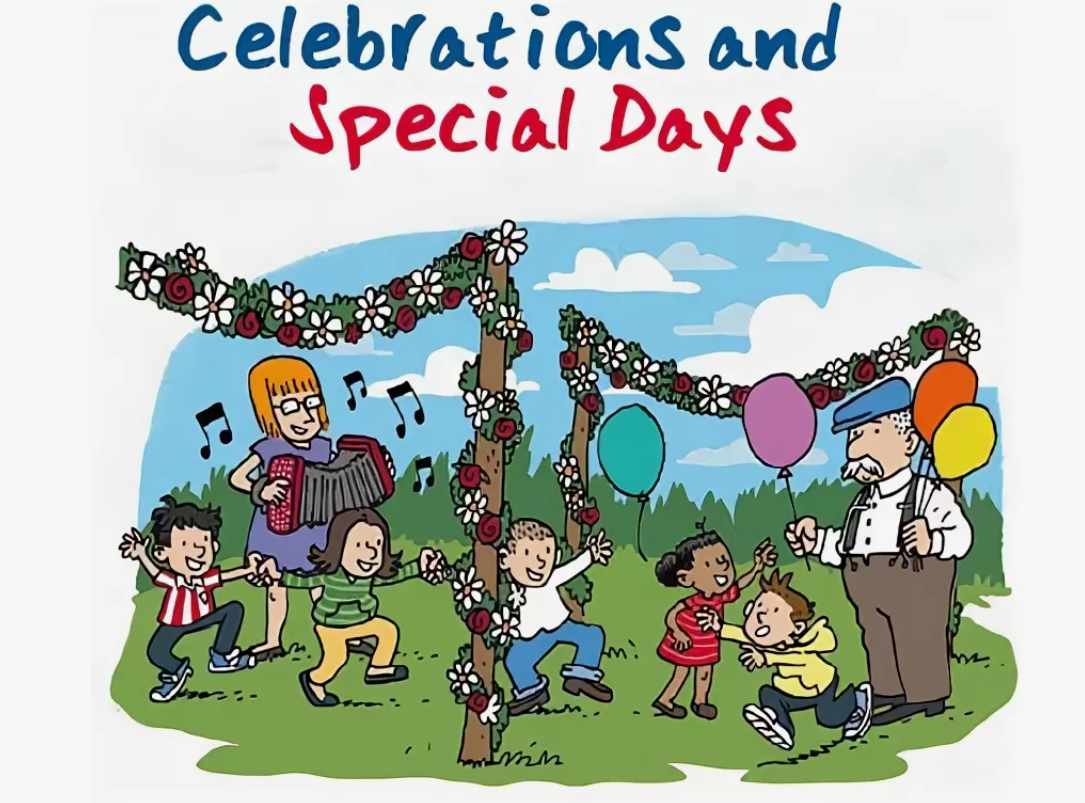
 ormative Assessment
ormative Assessment







